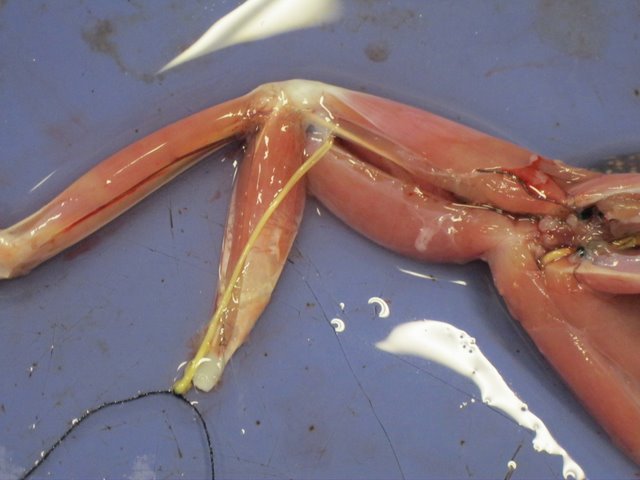
Chapter 15
This week's lab turns to a study of muscle anatomy and physiology.
For this lab, we use a Power Lab data aquistion unit, an amplifier and a force transducer. Once hooked up, the hook and thread connected to the transducer is pulled taut and any muscle contractions pull the force transducer down, displacing the sensor. This displacement, enhanced by the amplifier, is then graphed on the computer screen versus time. Using this set-up students examine various characteristics of the muscle, such as the difference in threshold for the nerve versus the muscle, tetanus, summation, neuromuscular fatigue and effect of a drug called tubocurarine.
Next, each group will use the stimulation of motor points set-up to observe what happens when points where the nerve enters the muscle are stimulated on the skin by an outside stimulus. Finally, students use an oscilloscope and electrodes to observe muscle recruitment in the bicep muscle.
Topics to Review Before Lab:
- Anatomy of skeletal muscle
- Sliding Filament Theory of contraction
- Excitation-contraction coupling
- Summation
- Tetanus
- Effects of stretch on contraction
- Type I vs. Type II muscle fibers